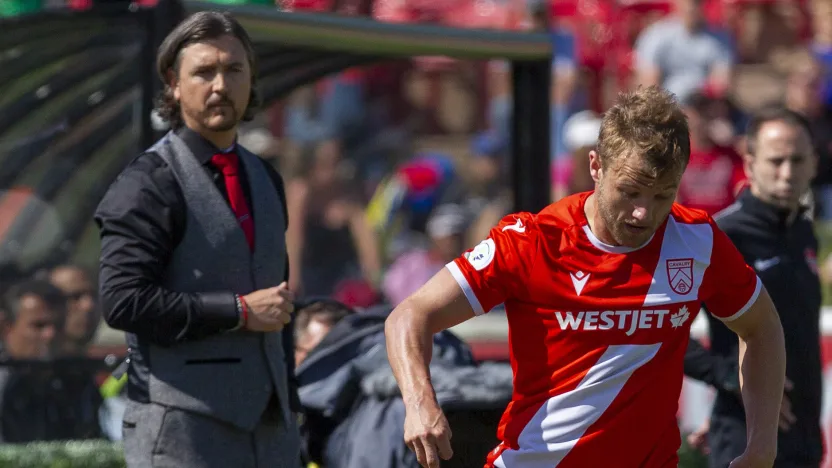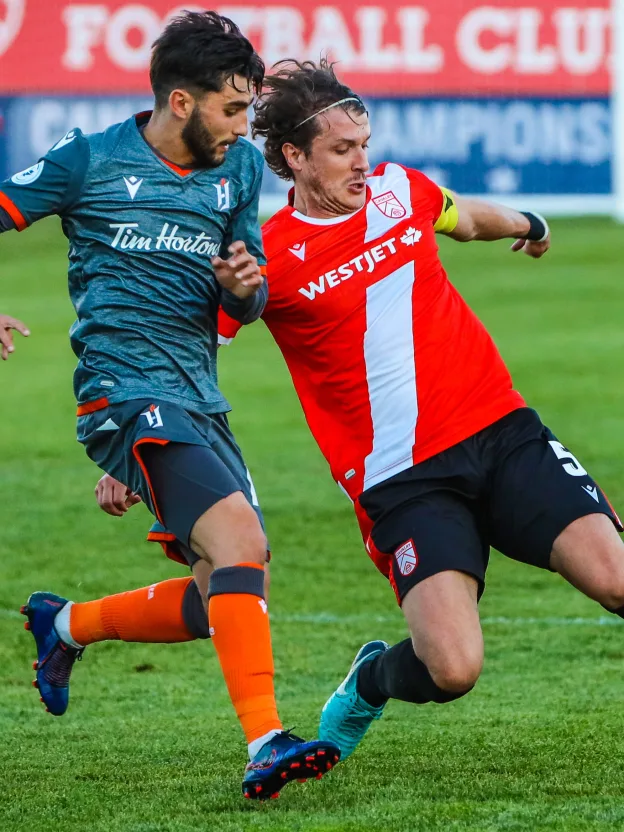Sometimes, when you cover a Canadian Premier League match, you get homework. Chatting with Cavalry FC coach Tommy Wheeldon Jr. ahead of Saturday’s fall-season-title-clinching 3-1 win over FC Edmonton, we got onto the topic of modern tactics. And he talked about Universality, by Matthew Whitehouse, a book which looks at the history of soccer tactics, and where the game is going in the future. Wheeldon Jr.’s Cavalry have openly embraced modern soccer; that is, it’s more about how you play rather than simply talking about formations. Numbers such as 4-2-3-1 and 4-3-3 and 4-4-2 have become less important, while terms such as “overloads” “pressure” and “blocks” are the watchwords. Teams can’t stick with tried and true formations. They have to constantly change. And, because of that, the specialist is a dying breed; players are asked to be able to play multiple positions, so they can adapt to changes within the game. Think about Cavalry players such as Joel Waterman or Dominick Zator, who can play in defence and in transition. They can play inside and out. “I’d like to think I’m a modern manager,” Wheeldon said. “We’ve had different outlooks, from a 3-4-3 to a 4-2-3-1, today we played 4-3-3 in the second half. We’ve had inverted wingers up at Forge and a false nine.” Because of the familiarity CPL teams have with each other, changing things up is vital. Asking players to do things outside of their comfort zones is important. We’ve also seen an example of this in Edmonton, where big target man Easton Ongaro was sometimes asked to play out on the wing. “You pick a game plan, because when you play each other that many times, you have to have something a little bit special,” Wheeldon said. “I think all players have got to be different and cover ground. Joel Waterman is a prime example, he can play as a centre back, today he played as a pivotal midfielder. “Malyk Hamilton is a winger when he joined us, he played left back today and right back the other day and played as a false nine another night. I think you just got to have that, that’s the way the game is going, and that’s the future of the game in Canada. We’ve got to catch up to the rest of the world.” But Wheeldon praised another coach for embracing the new mode of soccer thinking — John Herdman. “I think (John Herdman and his staff) did a great job in being tactically ahead of the U.S. in the last game,” Wheeldon stated. “We’re no different.” As someone who sometimes gets paid to break down soccer formations and tactics, this Canadian Premier League season was fascinating. This inaugural CPL campaign season only hammered home how much coaches here are embracing the latest in tactical ideas — and if you play a 4-3-3, are you doing it by overloading and pressing, or are you willing to let the opposition have some possession in its own half? Are you essentially targeting a defender or fullback on the other team and double teaming him when he has the ball, much like you might “trap” a player in basketball? Are you, like Cavalry, overloading players on the right wing, creating a numerical advantage on opposition wingers and fullbacks, ensuring that you create 3-v-2 or 2-v-1 situations? And, do you switch your look between offence and defence? Are you a flowing 4-3-3- going forward, but pack the middle with five when the other team has the ball?

Bobby Smyrniotis, whose Forge side faces the Cavalry in the Canadian Premier League Finals, beginning this weekend in Hamilton, is also embracing soccer’s new tactical thought. “I think it’s been central to my philosophy for years now, formations slowly dying is the catalyst for how you play, and more importantly becoming principles of play,” Smyrniotis explained. “That’s the one thing we’ve seen over the years at the highest level of the game, because, in the end of the day, it comes down to the movement of the players, the movement in space, and how quickly players can adjust to situations.” And formations, yup, they’re just numbers, now. They certainly don’t mean what they used to. “For me, formation is just the basis of something you put to implement the principles of your play,” Smyrniotis offered. “That looks different. You look at Forge FC and one thing everyone will see is a 4-3-3 as a snapshot at the beginning of the game; but that quickly becomes a 3-3-4, or a 3-4-3, or sometimes a 3-2-5 or a 2-3-5 so from a numbers aspect, it’s constantly changing based on the area of the field you’re in, the third of the field you’re in and the quadrants that you look at. “The most important thing in modern football is the principles of play, in the team and the movements of the players. Each player, each position you have, and what you’re asking of that position throughout the season and in the matches themselves.” The game is more complex than ever — and, yes, we’re seeing that sophistication in CPL games. And we can expect to see it when the Cavalry, no matter what formation the team uses, brings its infamous “90 minutes of hell” to Hamilton for this weekend’s first leg of Finals 2019. We’ll see it in how Forge changes how its players are distributed on the pitch as situations change. Can either Wheeldon or Bobby Smyrniotis, whose teams are wholly familiar with each other, come up with “something a little bit special?”

